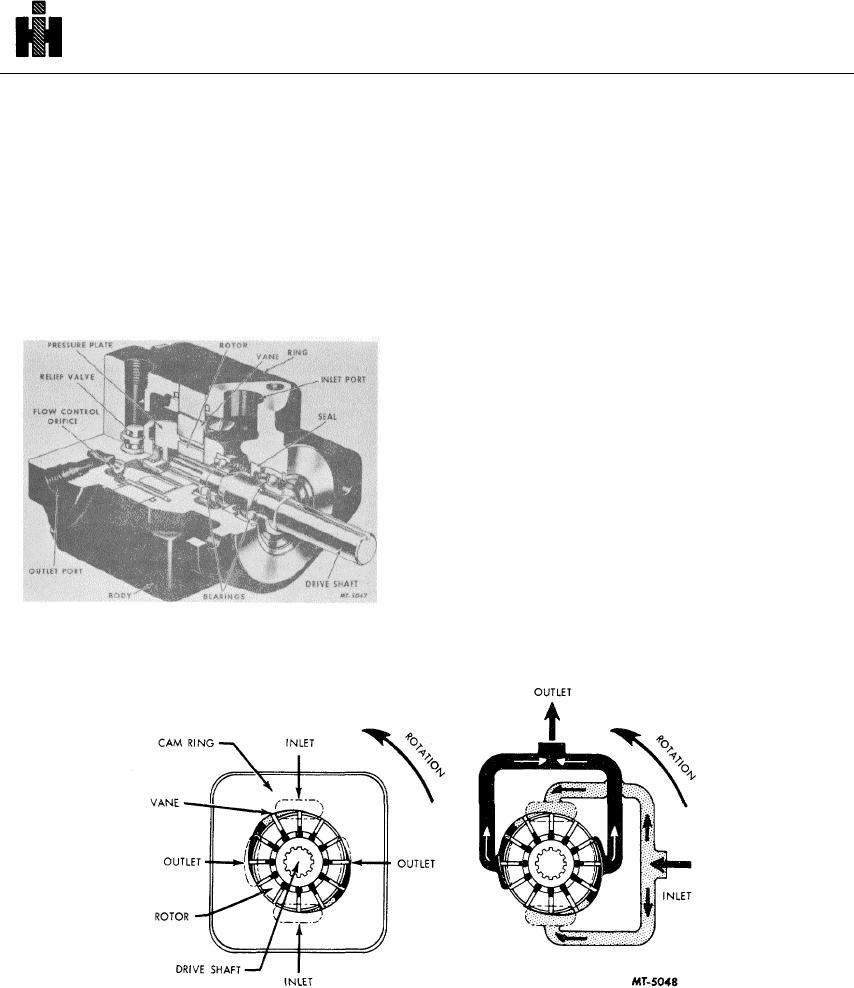
TRUCK SERVICE MANUAL
STEERING
The pump cover incorporates the integral Flow
DESCRIPTION
Control and Relief Valve. This limits the fluid flow in the
The pump illustrated in Fig. 1 consists principally of
system to a maximum prescribed rate and prevents
a ported body, a drive shaft supported by two ball
excessive pressure build-up. Fluid not required in the
bearings, a pumping cartridge and a pressure plate. The
system is recirculated to tank.
components of the cartridge are an elliptical ring, a
OPERATION
slotted rotor splined to the drive shaft and twelve vanes
fitted to the rotor slots. As the rotor is driven by the drive
The action of the pumping cartridge is illustrated in
shaft, the vanes generate fluid flow by carrying fluid
Fig. 2. The rotor is driven within the ring by the drive
around the elliptical ring contour. Fluid enters the
shaft, which is coupled to a power source. As the rotor
cartridge through the inlet port in the body and is
turns, centrifugal force on the vanes causes them to
discharged through the pressure plate to the outlet port
follow the elliptical inner surface of the ring.
in the cover,
Radial movement of the vanes and turning of the
rotor cause the chamber between the vanes to increase
as the vanes pass the inlet section of the ring. This
results in a low pressure condition which allows
atmospheric pressure to force fluid into the chambers.
(Fluid outside the inlet is at atmospheric pressure or
higher).
This fluid is trapped between the vanes and carried
past the large diameter or dwell section of the ring. As
the outlet section is approached, the ring diameter
decreases and the fluid is forced out into the system.
System pressure is fed under the vanes, assuring their
sealing contact against the ring during normal operation.
Fig. 1
Cutaway of Pump.
625

